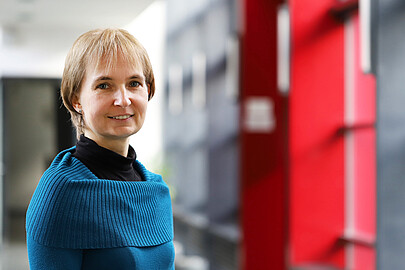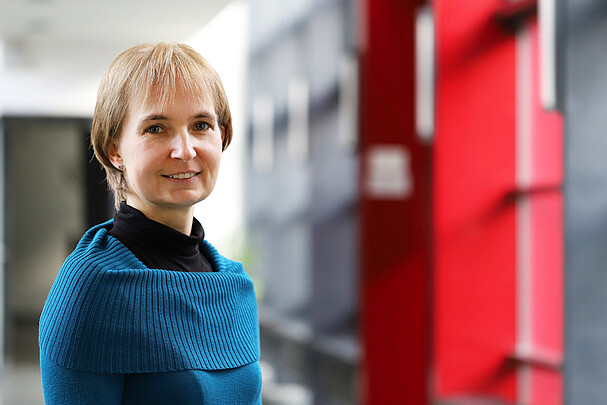
 ©
Wanner
©
Wanner
30167 Hannover

 ©
Wanner
©
Wanner
30167 Hannover
Who are you and what is the topic of your research group?
My name is Gudrun Wanner, I lead a group on optical simulations of precision interferometers. We have a special focus on the LISA mission, a space-based gravitational wave detector to be launched around 2034. Together with my team, I analyze noise sources in interferometry. We are working on the question: Where exactly does the noise come from, and how can we suppress it and thereby improve the precision of the interferometers? This is particularly important in the context of the LISA mission, as the interferometers in LISA have to work with picometre precision.
Which research question are you working on?
The main focus at the moment is to understand in detail the cross-coupling of satellite motions into the interferometric length change measurement. Although the satellites of the LISA mission will move very smoothly along their orbits, there will be a very slight residual jitter - we are talking about nanometre and nanoradian motions. Even though these are very small in themselves, they are large and disturbing compared to the picometre length changes that need to be resolved to measure gravitational waves as planned. We study this cross-coupling with different approaches: In optical simulations, we learn to understand the coupling in individual interferometers. In this way, we can show how the noise can be reduced by lens systems and small changes in the optical system (e.g., shifts in the beam axis). In addition, we show analytically and in numerical simulations how the couplings in the individual interferometers add up to a total noise in LISA and under which circumstances we can fit and subtract the noise.
What makes this topic special/exciting for you?
It is exciting to be able to work in a large international team on a satellite mission like LISA. This mission itself, its complexity, the extreme numbers we deal with every day, and the fantastic science that will be possible with the LISA data, this all is impressive and exciting, and I'm happy to be able to be part of it and contribute to this mission.
How does your topic help to push the boundaries of what can be measured?
A few years ago, we were able to show that the cross-coupling of satellite motion into the LISA signals is one of the strongest noise sources in the LISA mission and that a significant amount of control and suppression is necessary. In other words, without suppressing this noise, LISA would measure much fewer gravitational wave signals. More generally, we are working to improve the understanding of optical noise sources in interferometers and, more generally, to make precision interferometers even more accurate. This generalization is possible because many aspects of our daily work can be transferred to other applications and other interferometers.
What is special about participating in the QuantumFrontiers cluster of excellence?
A basic characteristic of every scientist is the hunger for more knowledge and curiosity, not only in their own field but beyond. QuantumFrontiers brings together a variety of exciting research fields: Quantum Optics, Solid State Physics, Geodesy, Laser Development, Optical Clocks, Metrology, Semiconductor Development, of course, Gravitational Wave Detection, and more. QuantumFrontiers, thus, brings me into contact with exciting research fields and scientists from the most diverse areas. Through QuantumFrontiers, I am constantly gaining more understanding of the state of research, and, at the same time, I am expanding my scientific network, i.e., my contacts with other scientists outside my own field.






